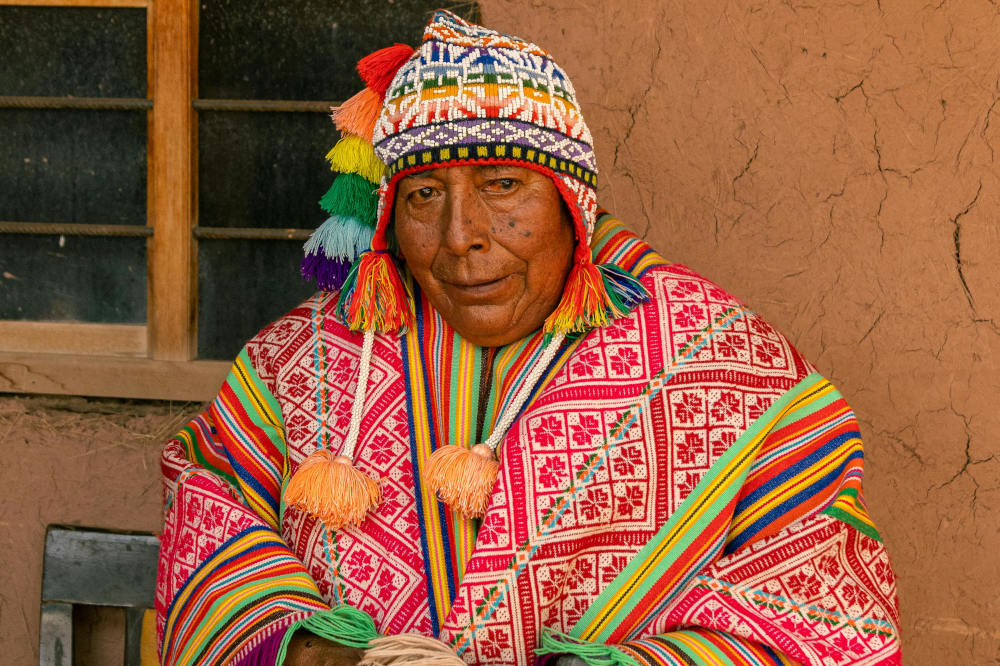
Im Laufe der Geschichte dienten Schamanen als spirituelle Führer, Heiler und Vermittler zwischen der physischen und spirituellen Welt. In allen Kulturen und Kontinenten wurden Schamanen für ihre Fähigkeit verehrt, mit Geistern zu kommunizieren, Kranke zu heilen, die Kräfte der Natur zu beeinflussen und spirituelle Zeremonien zu leiten. Obwohl Schamanismus meist mit indigenen Kulturen in Verbindung gebracht wird, haben seine Praktiken auch viele Welttraditionen geprägt und zeitgenössische spirituelle Bewegungen inspiriert. Dieser Artikel untersucht einige der berühmtesten Schamanen der Geschichte, von Sibirien bis Südamerika, und enthüllt ihre Rolle, ihr Erbe und ihren nachhaltigen Einfluss.
Panaprium ist unabhängig und wird vom Leser unterstützt. Wenn Sie über unseren Link etwas kaufen, erhalten wir möglicherweise eine Provision. Wenn Sie können, unterstützen Sie uns bitte monatlich. Die Einrichtung dauert weniger als eine Minute und Sie werden jeden Monat einen großen Beitrag leisten. Danke schön!
Was ist ein Schamane?
Das Wort „Schamane“ stammt vermutlich aus der tungusischen Ewenkensprache Sibiriens und bedeutet „jemand, der weiß“ oder „spiritueller Heiler“. Obwohl sich die Praktiken in den verschiedenen Kulturen stark unterscheiden, versetzen sich Schamanen typischerweise in veränderte Bewusstseinszustände, um mit Geistern zu interagieren, Wahrsagerei zu betreiben und Krankheiten zu behandeln – oft mithilfe von Ritualen, Trommeln, Tanz, Pflanzen oder Gesängen. Im Gegensatz zu Priestern, die in formellen religiösen Institutionen arbeiten, agieren Schamanen unabhängig und werden von direkter spiritueller Erfahrung geleitet.
Schamanische Traditionen finden sich bei den Samen Skandinaviens, den Mongolen Zentralasiens, den Indianerstämmen Amerikas, den Mapuche Chiles und vielen anderen Völkern. Einige Schamanen erlangten außergewöhnlichen Ruhm und Einfluss und wurden sogar zu legendären Figuren.
1. Dhul-Nun al-Misri (ca. 796–859 n. Chr.) – Ägypten
Obwohl Dhul-Nun al-Misri eher als Sufi-Mystiker bekannt ist, verband sein Werk spirituelle Erkenntnisse, Heilung und ekstatische Praktiken, die an schamanische Traditionen erinnern. Der in Ägypten geborene Mann war bekannt für seine tiefe Weisheit, seine Heilfähigkeiten und seine berichteten Wunder. Er beschrieb spirituelle Zustände als göttlichen Rausch und betonte die direkte Erfahrung mit dem Göttlichen – Kennzeichen des schamanischen Bewusstseins.
Al-Misri war einer der ersten, der die Idee der Ma'rifa , des inneren mystischen Wissens, artikulierte. Ihm wurde nachgesagt, er könne mit Tieren und Geistern kommunizieren, Träume deuten und in tranceähnliche Zustände gelangen. Sein Einfluss prägte die islamische Mystik und zeigt, wie schamanische Züge in religiösen Traditionen vorkommen können.
2. Schwarzer Wapiti (1863–1950) – Oglala Lakota, Nordamerika
Black Elk, einer der berühmtesten indianischen Schamanen, war ein heiliger Mann der Oglala Lakota Sioux. Als Kind erlebte er mächtige Visionen und wurde als Wičháša Wakȟáŋ (heiliger Mann) anerkannt. Er war an wichtigen historischen Ereignissen wie der Schlacht am Little Bighorn und dem Massaker von Wounded Knee beteiligt.
Später teilte Black Elk seine Visionen und spirituellen Erkenntnisse mit der Welt, vor allem durch John Neihardts Buch „Black Elk Speaks“ von 1932. Seine Lehren betonten die Verbundenheit allen Lebens, Heilung durch die Natur und heilige Zeremonien wie den Sonnentanz. Seine Verbindung aus Lakota-Spiritualität und christlichen Einflüssen machte ihn zu einer Brücke zwischen den Welten.
3. María Sabina (1894–1985) – Mazatec, Mexiko
María Sabina war eine Mazatec-Schamanin (oder Sabia ) aus Oaxaca, Mexiko, die für ihre Verwendung von Psilocybin-Pilzen in Heilritualen bekannt war. Ihre Praxis, die sie „Veladas“ nannte, umfasste das Rezitieren, Singen und die Begleitung der Teilnehmer durch visionäre Erlebnisse. Diese Zeremonien waren tief in indigenen Traditionen verwurzelt und zielten auf Heilung, Erkenntnis und spirituelle Führung ab.
In den 1950er Jahren besuchte der amerikanische Bankier R. Gordon Wasson sie und veröffentlichte später seine Erfahrungen im Life- Magazin. Dieser Kontakt löste unbeabsichtigt die psychedelische Bewegung im Westen aus, verursachte aber in ihrem Dorf große Unruhen. Obwohl sie später von ihrer Gemeinde geächtet wurde, gilt Sabina heute weltweit als Symbol indigener Weisheit und der heiligen Anwendung pflanzlicher Medizin.
4. Tēwakanīh:ta' (Hände des Feuers) – Irokesenbund
Obwohl in der Geschichtsschreibung weniger dokumentiert, verehrte der Irokesenbund viele Schamanen und Medizinmänner mit großem Einfluss. Eine dieser Persönlichkeiten, in der mündlichen Überlieferung als Tēwakanīh:ta' oder „Hände des Feuers“ bekannt, war ein Mohawk-Heiler aus dem 17. Jahrhundert. Seine spirituellen Visionen und mächtigen Heilkräfte brachten ihm großes Ansehen bei den Haudenosaunee ein.
Man glaubte, er spreche mit der Geisterwelt und sei maßgeblich an der Wiederherstellung des Gleichgewichts in Zeiten von Stammeskonflikten beteiligt gewesen. Sein Leben veranschaulicht, wie mündlich überlieferte Überlieferungen schamanische Weisheit bewahren und wie spirituelle Führer oft eine politische Rolle bei der Wahrung des Friedens spielten.
5. Mircea Eliade (1907–1986) – Gelehrter und schamanischer Anwalt
Obwohl er kein traditioneller Schamane war, verdient der rumänische Historiker Mircea Eliade Erwähnung für seinen wissenschaftlichen Beitrag zum Schamanismus. In seinem Buch „Shamanism: Archaic Techniques of Ecstasy“ (1951) untersuchte er systematisch globale schamanische Praktiken und verglich Rituale, Trancezustände und Kosmologien. Seine Arbeit verlieh dem Schamanismus akademische Legitimität und inspirierte eine moderne Renaissance im Westen.
Eliade beleuchtete die Reise des Schamanen durch spirituelle Welten und den symbolischen „Tod und die Wiedergeburt“, den er während der Initiation erlebte. Seine Schriften beeinflussten nicht nur Gelehrte, sondern auch moderne neoschamanische Praktiken und spirituelle Suchende.
6. Olchon-Schamanen – Baikalsee, Sibirien
Sibirien gilt oft als Kernland des klassischen Schamanismus. Die Insel Olchon im Baikalsee ist einer der heiligsten Orte für burjatische und ewenkische Schamanen. Historisch fungierten Schamanen hier als spirituelle Vermittler zwischen der Natur, den Geistern der Vorfahren und den Menschen. Sie führten aufwendige Rituale mit Trommeln, Feuer und spirituellen Reisen durch.
Während viele burjatische Schamanen während der Sowjetzeit verfolgt wurden, wurden ihre Traditionen in den letzten Jahrzehnten wiederbelebt. Heute führen Schamanen wie Bair Tsyrendorzhiev , ein zeitgenössischer burjatischer Praktizierender, die Tradition fort und nehmen sogar an internationalen interreligiösen Zeremonien teil.
7. Quetzalcoatl (mythischer Schamanenkönig) – Mesoamerika
Obwohl Quetzalcoatl, der gefiederte Schlangengott der Azteken und Tolteken, teilweise mythologisch ist, wird er oft als schamanische Figur interpretiert. Der Legende nach war er ein göttlicher Priesterkönig, der zwischen den Welten reisen, heilen und heiliges Wissen lehren konnte. Er wurde mit dem Morgenstern (Venus), spiritueller Auferstehung und Transformation in Verbindung gebracht.
Einige Forscher glauben, dass Quetzalcoatl auf einem echten toltekischen Herrscher oder spirituellen Führer basierte, dessen Lehren im Laufe der Zeit mythologisiert wurden. Sein Archetyp repräsentiert den idealen schamanischen Führer – weise, mit dem Kosmos verbunden und der Erleuchtung und dem Gleichgewicht verpflichtet.
8. Davi Kopenawa Yanomami (geb. 1956) – Brasilien
Davi Kopenawa ist ein lebender Schamane und Sprecher des Yanomami-Volkes im Amazonas-Regenwald. Er ist sowohl spiritueller als auch politischer Führer. Ausgebildet im traditionellen Yanomami-Schamanismus, kommuniziert er mit Xapiri – Geistwesen, die den Wald schützen und Heilung anbieten. Er ist ein leidenschaftlicher Verteidiger der Rechte der Ureinwohner und der ökologischen Integrität des Amazonas.
In seinem gemeinsam mit dem Anthropologen Bruce Albert verfassten Buch „The Falling Sky“ beschreibt Kopenawa seine schamanische Weltanschauung, seine ökologische Weisheit und die Bedrohung durch die moderne Zerstörung. Sein Werk stellt die Verbindung traditioneller Spiritualität mit Umweltaktivismus dar.
Die Rolle der Schamanen heute
Während der traditionelle Schamanismus in einigen Teilen der Welt an Bedeutung verloren hat, erlebt er in anderen eine Renaissance. Zeitgenössische Schamanen, sowohl indigene als auch moderne, dienen weiterhin als Heiler, Führer und spirituelle Lehrer. Bewegungen wie der Neoschamanismus, die Elemente verschiedener Traditionen integrieren, haben sich weltweit verbreitet – allerdings nicht ohne Kritik an kultureller Aneignung.
Authentische Schamanen bleiben in kulturellem Wissen, spiritueller Disziplin und dem Dienst an ihrer Gemeinschaft verwurzelt. Persönlichkeiten wie Black Elk und María Sabina erinnern uns daran, dass es beim wahren Schamanismus nicht um Spektakel geht, sondern um Heilung, Gleichgewicht und eine tiefe Verbindung zum Heiligen.
Abschluss
Berühmte Schamanen der Geschichte waren mehr als nur mystische Heiler – sie waren kulturelle Brückenbauer, Hüter der Weisheit und Vermittler der Transformation. Von den schneebedeckten Ebenen Sibiriens bis zu den Wäldern des Amazonas haben Schamanen eine entscheidende Rolle bei der Gestaltung spiritueller Traditionen und der Bewahrung der menschlichen Verbindung zur Natur und der unsichtbaren Welt gespielt. Während die moderne Gesellschaft nach tieferem Sinn und ganzheitlicher Heilung sucht, wirkt das Erbe dieser bemerkenswerten Persönlichkeiten nach wie vor.
Ihre Geschichten erinnern uns daran, dass Heilung nicht nur körperlich, sondern auch geistig erfolgt, dass Wissen aus Visionen und Träumen entstehen kann und dass Weisheit oft darin liegt, auf das Land, die Vorfahren und die Stille zwischen den Worten zu hören.
War dieser Artikel hilfreich für Sie? Bitte teilen Sie uns in den Kommentaren unten mit, was Ihnen gefallen oder nicht gefallen hat.
About the Author: Alex Assoune
Wogegen Wir Kämpfen
Weltweit-Konzerne produzieren in den ärmsten Ländern im Übermaß billige Produkte.
Fabriken mit Sweatshop-ähnlichen Bedingungen, die die Arbeiter unterbezahlt.
Medienkonglomerate, die unethische, nicht nachhaltige Produkte bewerben.
Schlechte Akteure fördern durch unbewusstes Verhalten den übermäßigen Konsum.
- - - -
Zum Glück haben wir unsere Unterstützer, darunter auch Sie.
Panaprium wird von Lesern wie Ihnen finanziert, die sich unserer Mission anschließen möchten, die Welt völlig umweltfreundlich zu gestalten.
Wenn Sie können, unterstützen Sie uns bitte monatlich. Die Einrichtung dauert weniger als eine Minute und Sie werden jeden Monat einen großen Beitrag leisten. Danke schön.































0 Kommentare